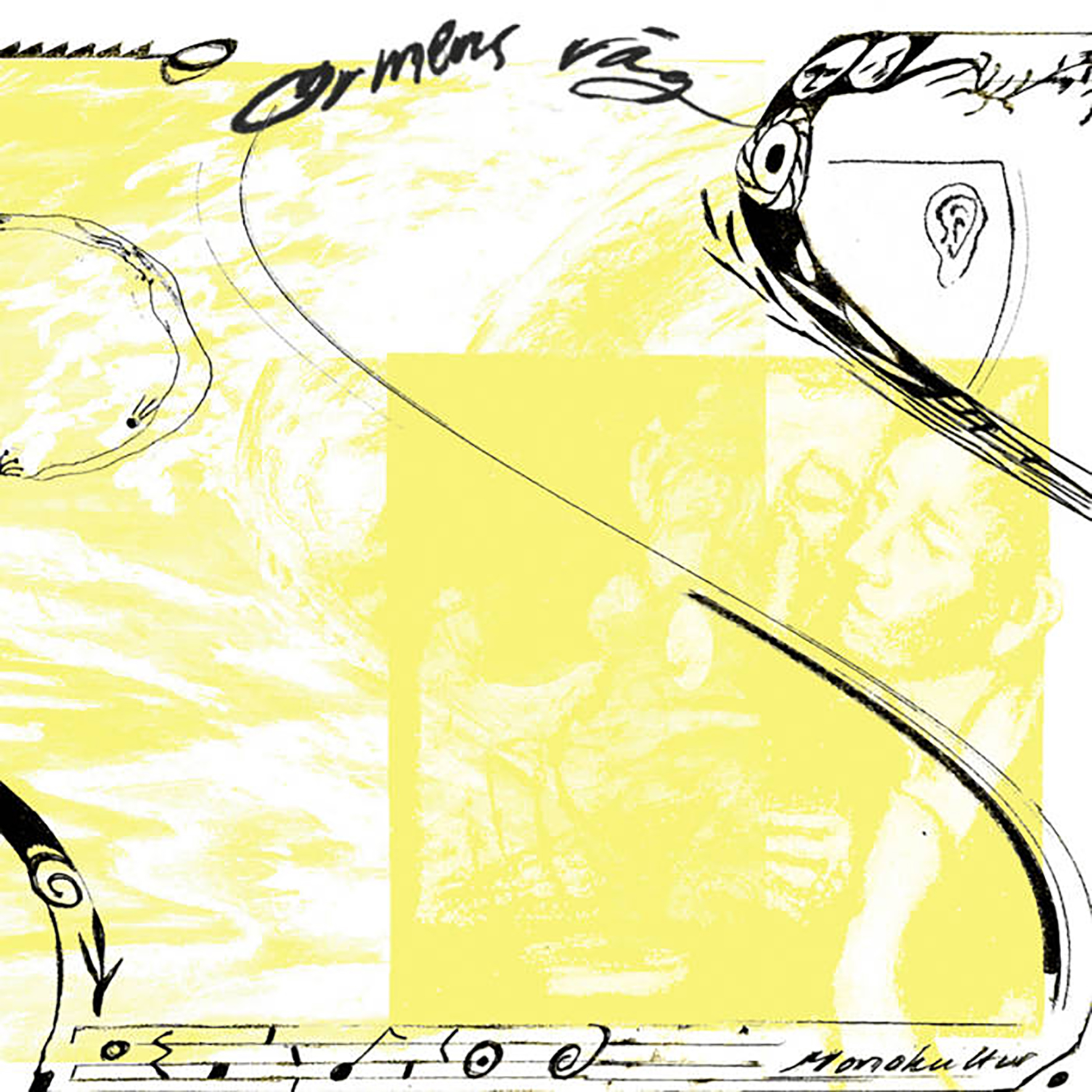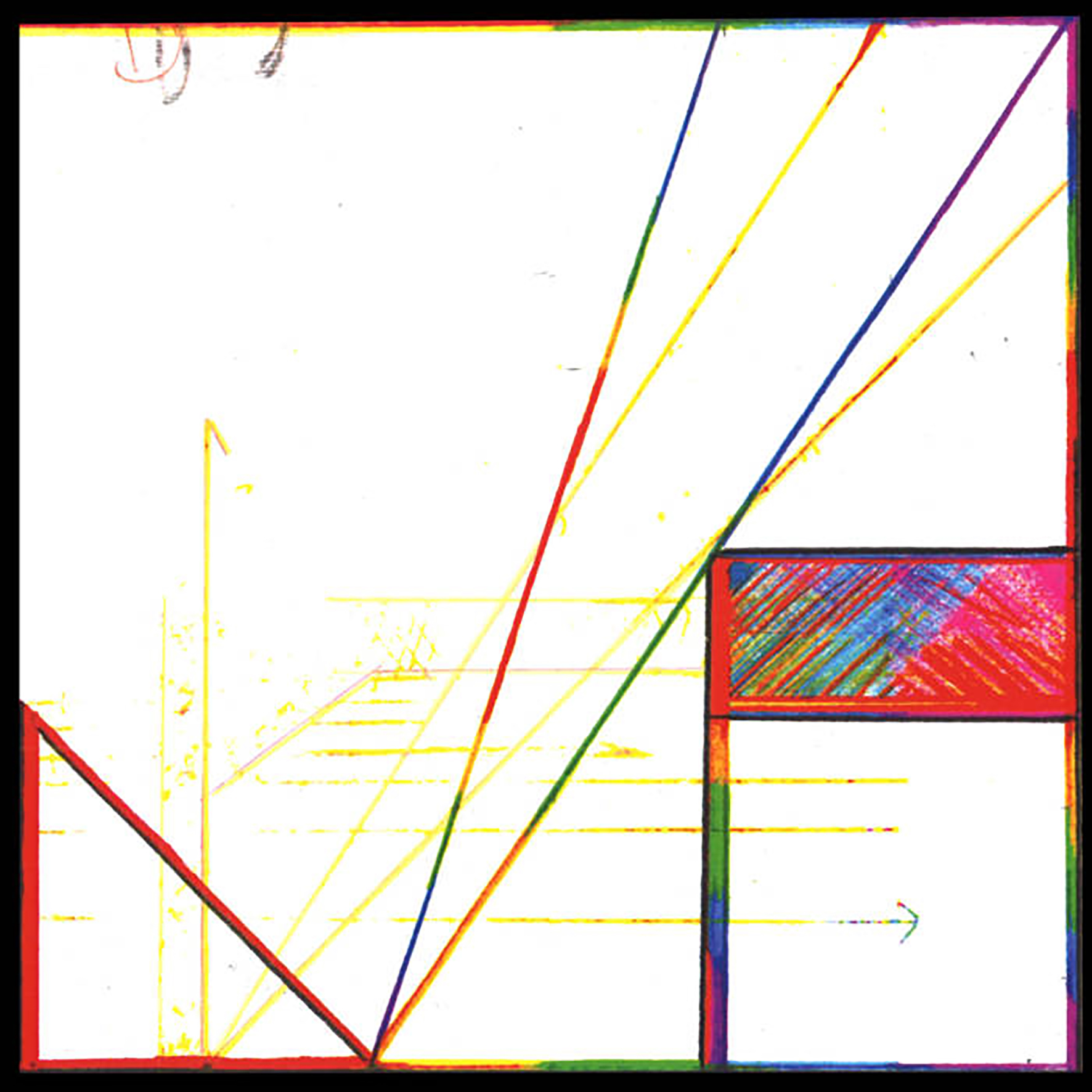 I don’t know exactly what synth-like equipment Robert Takahashi Crouch uses to generate these sounds and maneuver them into place, but these three pieces are very impressive. This is an album of abstract music and it is useful for reference to have detailed context of Crouch's personal challenges and struggle as outsider, victim, self-destructor, or whatever. I read those between my first and second listens to Jubilee and it definitely helped.
I don’t know exactly what synth-like equipment Robert Takahashi Crouch uses to generate these sounds and maneuver them into place, but these three pieces are very impressive. This is an album of abstract music and it is useful for reference to have detailed context of Crouch's personal challenges and struggle as outsider, victim, self-destructor, or whatever. I read those between my first and second listens to Jubilee and it definitely helped.
The opening track "Ritual" has a tense vibe and a sense of emotional heavy lifting is achieved by huge slabs of grinding, vibrating, texture, which emerge and then blend or get overlaid like shifting tectonic plates of sound. There is a weird feeling of aggression, but this feels turned inward rather than aimed at the listener. I felt involved with the music but it also came over as both detached and claustrophobic. An odd pair of descriptors, perhaps, but I hear Jubilee not unlike how I see the doomed grey void of the Rothko Chapel: it drew me in but kept me at arms length). According to Crouch's contextual notes, the next track “I have been part of evil doing” is an acknowledgement that even the abused may do "bad" things to others which they come to regret. This shorter work, which takes it’s title from “People Like Us” a 2007 record by The Dears, has a calmer, gentler, softer, air - an excellent variation against the weightier “Ritual.” This quite lighter mood leads perfectly into “Reconciliation” which is just as beautiful. This final track begins with the recounting of a survived bridge suicide attempt in a sample from a poem by Ted Berrigan from the 1975 record The Dial-a-Poem Poets: Biting Off The Tongue of a Corpse. The placement of a human voice here is another fine contrast, and the somber tone and graceful pace of "Reconciliation" succeeds in uniting the whole album with a powerful renewal of hope and forgiveness (especially the latter). The three sections together make Jubilee a really coherent and satisfying recording, located betwixt sound installation art and electronic expressionism, with an emotional edge that gives it a tangible feeling of integrity and maybe even hope for personal growth.
This is a fine album which I would prefer to listen to again than revisit the Rothko chapel (though I love Rothko's other works). In fact I have already heard Jubilee six or seven times, despite the title being a reference to a work by the so-called anarchist poet (with a trust fund) Hakim Bey to whose writing I have a strong aversion. To call him a juvenile imitation of William Burroughs would be flattery. It is certainly possible to view him as an incoherent creep, spinning deceitful tips for weekend rebels or oozing his pitiful justifications for pedophilia like puss from an open wound. It is debatable whether his blather is worse than the illogical, pseudo-freedom loving gasbag rambles of Ron and Rand Paul when they butter-up their constituents with easily-decoded defenses of racism. I personally can't stomach a message of forgiveness from any of them and the fact that Andrei Codrescu got suckered into feting Bey also does nothing for my digestion. Thankfully all this is merely a matter of opinion, perhaps worthless, certainly available free on the internet as is the entirety of Bey's writing. Crouch's record is worth more.
 


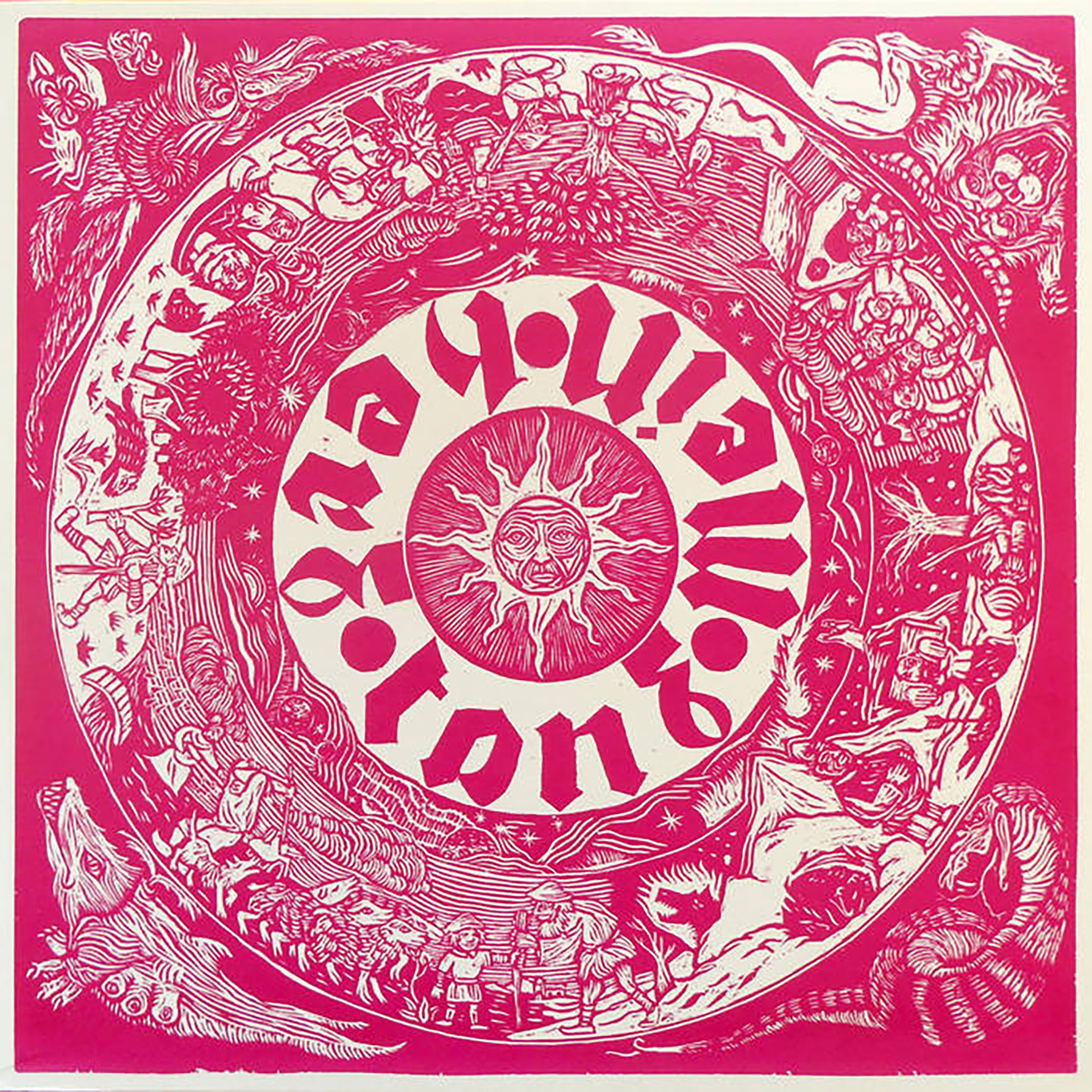 I began 2021 not knowing a single goddamn thing about Jeremie Sauvage, the Standard In-Fi label, or France's fascinating Auvergnat/avant-folk milieu, but I am certainly ending the year as a somewhat obsessed fan. Weirdly, this year was not an especially prolific year for the milieu, though Yann Gourdon and Sourdure had fresh releases, yet this album, the Sourdure album, and a pair of France reissues seemed to reach a lot more ears than usual and two of those ears were mine. The linguistically astute may successfully deduce that Quattro is Tanz Mein Herz's fourth album, but details beyond that are minimal and the recordings actually date from a two-day "public recording session" back in 2016 (the band's entire discography seems to have been recorded between 2014 and 2016, in fact). There is also some poetic information provided in French that makes repeated references to drones, vibrations, resonance, infinity, suspension, immensity, and a "pendulum of dreams," which I found both apt and predictably alluring. Admittedly, many of those descriptors could also apply to a host of disappointing drone albums, but I suspect the "pendulum of dreams" bit is probably the secret ingredient that makes this particular album so transcendent. That said, Quattro can also be quite challenging at times, but it unquestionably captures a very unusual acoustic drone ensemble at the very height of their eclectic and hypnotic powers, so it invariably winds up somewhere compelling no matter how prickly the voyage may become along the way.
I began 2021 not knowing a single goddamn thing about Jeremie Sauvage, the Standard In-Fi label, or France's fascinating Auvergnat/avant-folk milieu, but I am certainly ending the year as a somewhat obsessed fan. Weirdly, this year was not an especially prolific year for the milieu, though Yann Gourdon and Sourdure had fresh releases, yet this album, the Sourdure album, and a pair of France reissues seemed to reach a lot more ears than usual and two of those ears were mine. The linguistically astute may successfully deduce that Quattro is Tanz Mein Herz's fourth album, but details beyond that are minimal and the recordings actually date from a two-day "public recording session" back in 2016 (the band's entire discography seems to have been recorded between 2014 and 2016, in fact). There is also some poetic information provided in French that makes repeated references to drones, vibrations, resonance, infinity, suspension, immensity, and a "pendulum of dreams," which I found both apt and predictably alluring. Admittedly, many of those descriptors could also apply to a host of disappointing drone albums, but I suspect the "pendulum of dreams" bit is probably the secret ingredient that makes this particular album so transcendent. That said, Quattro can also be quite challenging at times, but it unquestionably captures a very unusual acoustic drone ensemble at the very height of their eclectic and hypnotic powers, so it invariably winds up somewhere compelling no matter how prickly the voyage may become along the way. Klara Lewis has been a unique and consistently interesting artist ever since she first surfaced, but 2020's Ingrid felt like a massive breakthrough and just about everything that she has released since has been stellar (live albums included). Unsurprisingly, Live in Montreal 2018 does nothing to derail that streak, but there are a couple of somewhat big surprises with it too. The first one is the date of the performance, as I had no idea that Lewis was on this plane two years before Ingrid came along. That is not to say that Live in Montreal would have necessarily eclipsed 2016's excellent Too had it been the follow up, but the Lewis of 2016 was an artist who seemed categorically disinterested in doing anything the conventional/expected way. And the comparative melodicism of 2018's fitfully great collaboration with Simon Fisher Turner (Care) felt like a one-off experiment in applying her non-musical found sounds to a more traditionally musical vision rather than a change in direction. As it turns out, however, Care was merely a tease of greater things to come and the lucky attendees of this performance got a sneak preview of those greater things long before the rest of us. The second big surprise is that this album is composed of seemingly all new material rather than variations on Lewis's existing work—it feels aesthetically akin to a proto-Ingrid, but a stage before that piece was distilled to just a single perfect motif. Obviously, that narrowing of focus yielded great results, but this more varied and shapeshifting approach yielded some legitimately great results too, elegantly blurring the lines between drone, noise, spacy synth explorations, and pop plunderphonics.
Klara Lewis has been a unique and consistently interesting artist ever since she first surfaced, but 2020's Ingrid felt like a massive breakthrough and just about everything that she has released since has been stellar (live albums included). Unsurprisingly, Live in Montreal 2018 does nothing to derail that streak, but there are a couple of somewhat big surprises with it too. The first one is the date of the performance, as I had no idea that Lewis was on this plane two years before Ingrid came along. That is not to say that Live in Montreal would have necessarily eclipsed 2016's excellent Too had it been the follow up, but the Lewis of 2016 was an artist who seemed categorically disinterested in doing anything the conventional/expected way. And the comparative melodicism of 2018's fitfully great collaboration with Simon Fisher Turner (Care) felt like a one-off experiment in applying her non-musical found sounds to a more traditionally musical vision rather than a change in direction. As it turns out, however, Care was merely a tease of greater things to come and the lucky attendees of this performance got a sneak preview of those greater things long before the rest of us. The second big surprise is that this album is composed of seemingly all new material rather than variations on Lewis's existing work—it feels aesthetically akin to a proto-Ingrid, but a stage before that piece was distilled to just a single perfect motif. Obviously, that narrowing of focus yielded great results, but this more varied and shapeshifting approach yielded some legitimately great results too, elegantly blurring the lines between drone, noise, spacy synth explorations, and pop plunderphonics.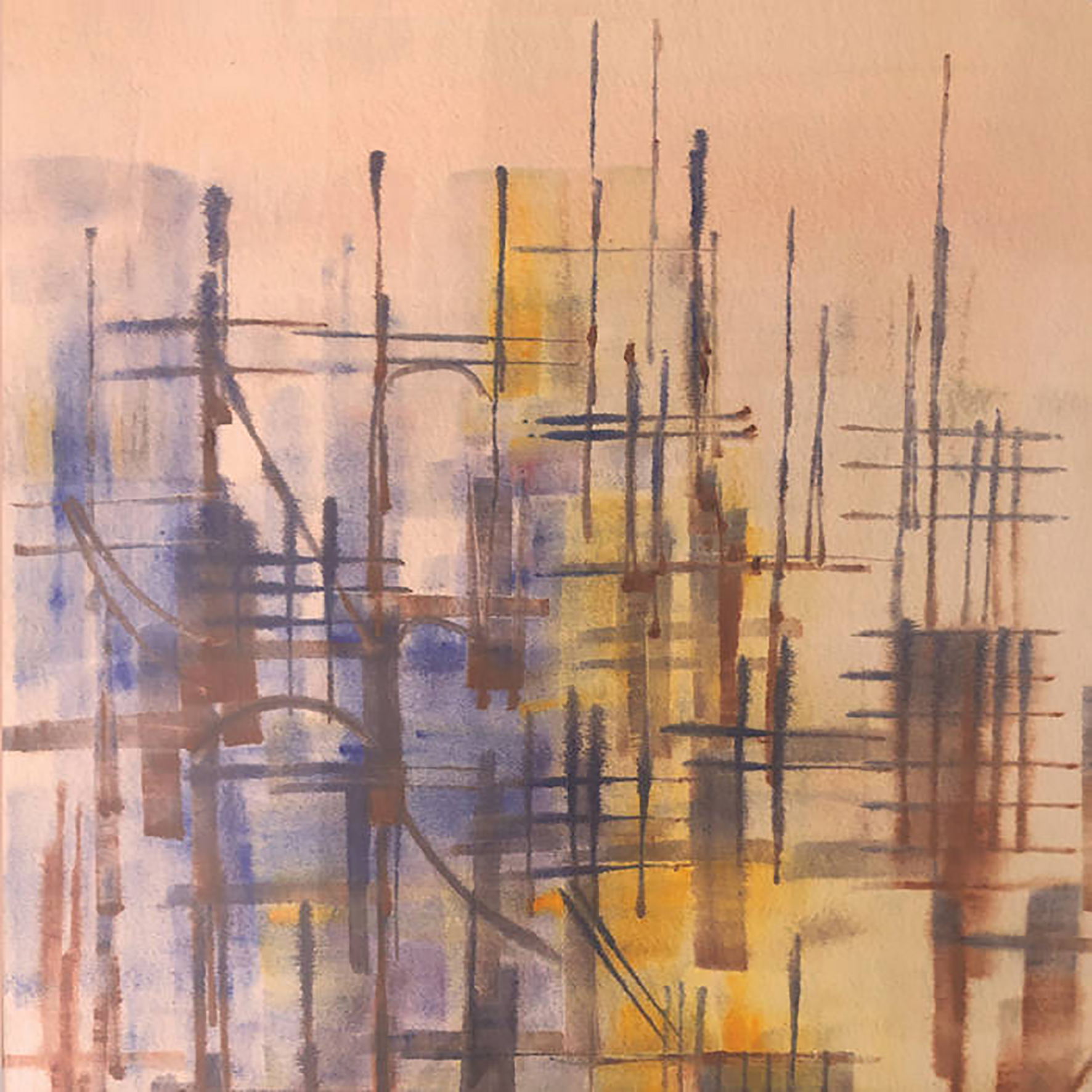 As far as I am concerned, Konstantinos Soublis earned a lifetime pass as dub techno royalty with his early Chain Reaction work (the likes of which enjoyed a well-deserved renaissance when Type reissued Vibrant Forms in 2013). Much like fellow visionary Moritz von Oswald, however, Soublis has a creatively restless spirit that has led him in a number of different directions since that scene's late '90s/early '00s golden age came to an end. While I cannot say that I have been a fan of all of Fluxion's various detours over the years, Soublis's unpredictably hit-or-miss discography has continued to surprise me with a legitimate hit every few years. In fact, Fluxion has been in unusually fine form recently and that upswing seems to have culminated in this album, which is unexpectedly one of the most uniformly strong and inspired releases in the project's entire oeuvre. Part of that success is likely due to Soublis's decision to take his vision in a more intimate and inwardly inspired direction (the album was inspired by "real life moments, people, expectations, joy, dreams and disappointments"), but the primary appeal of Parallel Moves is that his new inspirations manifested themselves in quite a killer batch of unusually sensual, soulful, and melodic songs. To my ears, this is a very strong contender for the best Fluxion album ever released.
As far as I am concerned, Konstantinos Soublis earned a lifetime pass as dub techno royalty with his early Chain Reaction work (the likes of which enjoyed a well-deserved renaissance when Type reissued Vibrant Forms in 2013). Much like fellow visionary Moritz von Oswald, however, Soublis has a creatively restless spirit that has led him in a number of different directions since that scene's late '90s/early '00s golden age came to an end. While I cannot say that I have been a fan of all of Fluxion's various detours over the years, Soublis's unpredictably hit-or-miss discography has continued to surprise me with a legitimate hit every few years. In fact, Fluxion has been in unusually fine form recently and that upswing seems to have culminated in this album, which is unexpectedly one of the most uniformly strong and inspired releases in the project's entire oeuvre. Part of that success is likely due to Soublis's decision to take his vision in a more intimate and inwardly inspired direction (the album was inspired by "real life moments, people, expectations, joy, dreams and disappointments"), but the primary appeal of Parallel Moves is that his new inspirations manifested themselves in quite a killer batch of unusually sensual, soulful, and melodic songs. To my ears, this is a very strong contender for the best Fluxion album ever released.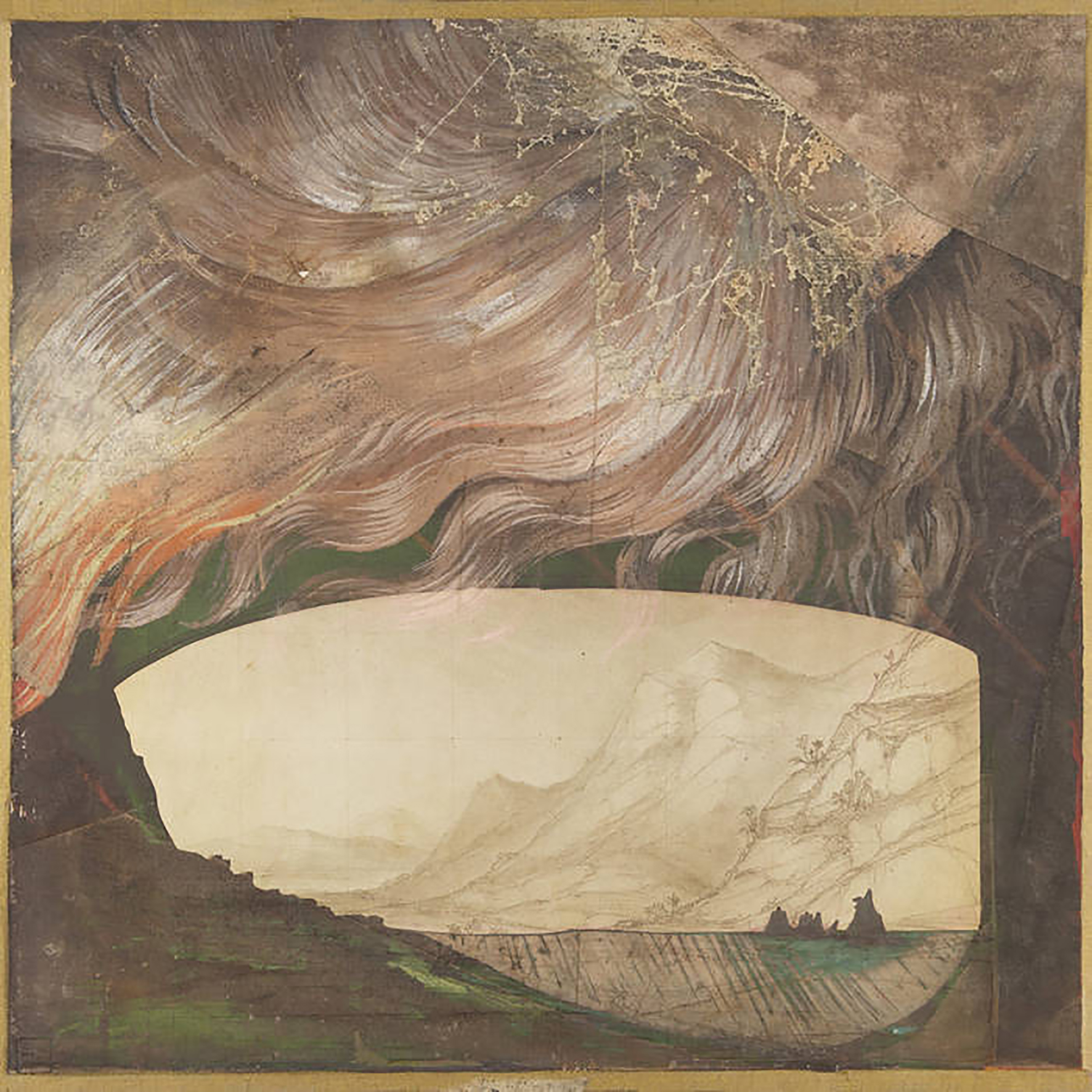
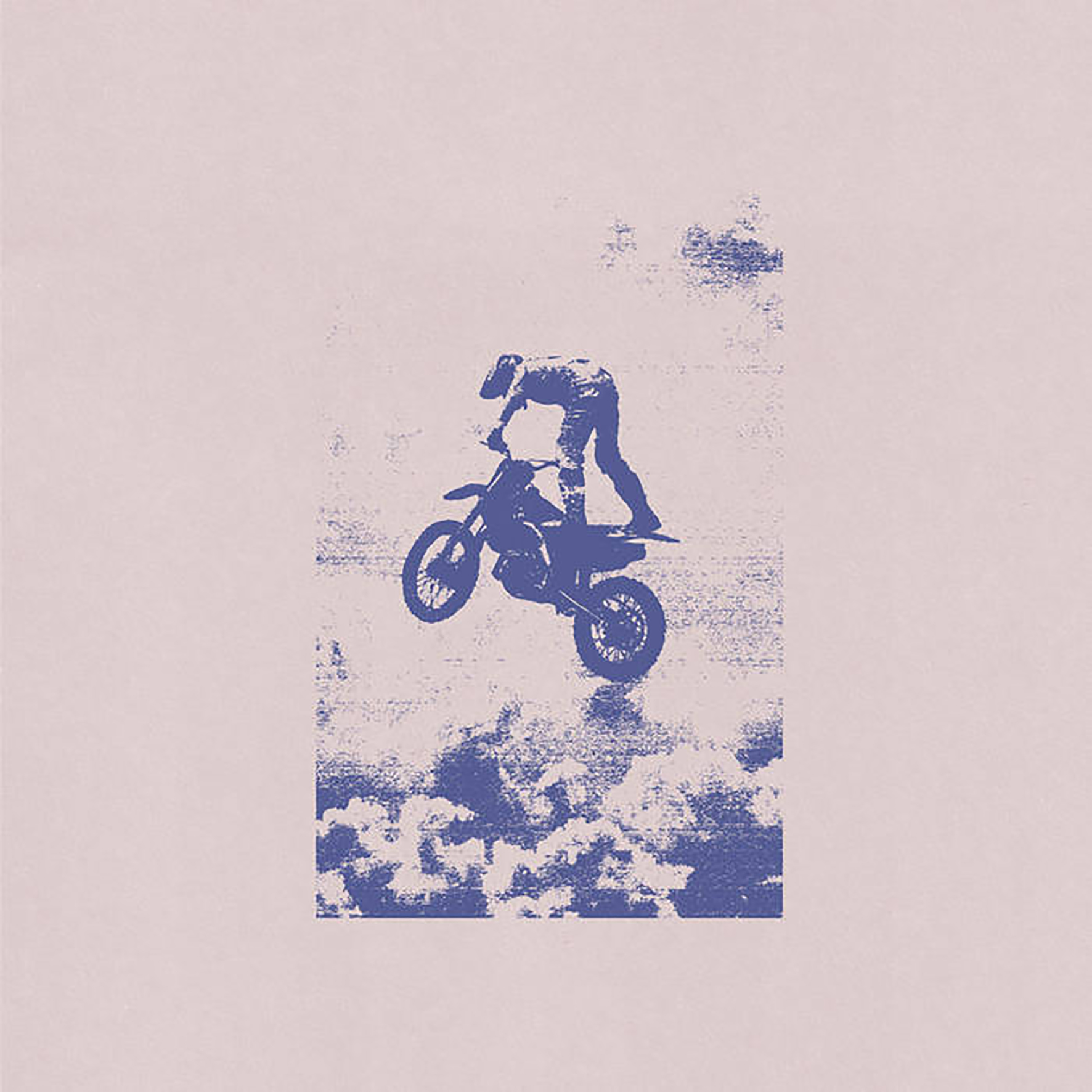 This is the debut album from a "network of New England string pluckers, organ drivers and bell ringers" centered around composer/pedal steel guitarist Henry Birdsey. This is my first real encounter with Birdsey's work, though I was vaguely aware of his duo Tongue Depressor with Crazy Doberman's Zach Rowdan. While I do not get the usual otherworldly "Just Intonation" vibe from Country Tropics' buzzing and layered harmonies, unconventional tunings have historically been a central theme in Birdsey's work, so that may be an element here too. Then again, Old Saw seems like a very different project than Birdsey's usual fare in one very significant way, as Country Tropics is billed as a unique strain of devotional music. I believe it is a secular one, however, as the album description claims "Old Saw points our gaze downward towards the terrafirma unconsidered, and guides our hands into the dirt" rather than towards a "fantastical, celestial vision of understanding." Regardless of their inspirations, Old Saw is an ensemble like no other, approximating a rustic drone or free folk ensemble like Pelt or Vibracathedral Orchestra in an especially warm and transcendent mood (albeit not so warm and transcendent as to preclude some welcome sharp edges, shadows of dissonance, and heavy buzzing strings). This is quite an excellent and unique album.
This is the debut album from a "network of New England string pluckers, organ drivers and bell ringers" centered around composer/pedal steel guitarist Henry Birdsey. This is my first real encounter with Birdsey's work, though I was vaguely aware of his duo Tongue Depressor with Crazy Doberman's Zach Rowdan. While I do not get the usual otherworldly "Just Intonation" vibe from Country Tropics' buzzing and layered harmonies, unconventional tunings have historically been a central theme in Birdsey's work, so that may be an element here too. Then again, Old Saw seems like a very different project than Birdsey's usual fare in one very significant way, as Country Tropics is billed as a unique strain of devotional music. I believe it is a secular one, however, as the album description claims "Old Saw points our gaze downward towards the terrafirma unconsidered, and guides our hands into the dirt" rather than towards a "fantastical, celestial vision of understanding." Regardless of their inspirations, Old Saw is an ensemble like no other, approximating a rustic drone or free folk ensemble like Pelt or Vibracathedral Orchestra in an especially warm and transcendent mood (albeit not so warm and transcendent as to preclude some welcome sharp edges, shadows of dissonance, and heavy buzzing strings). This is quite an excellent and unique album.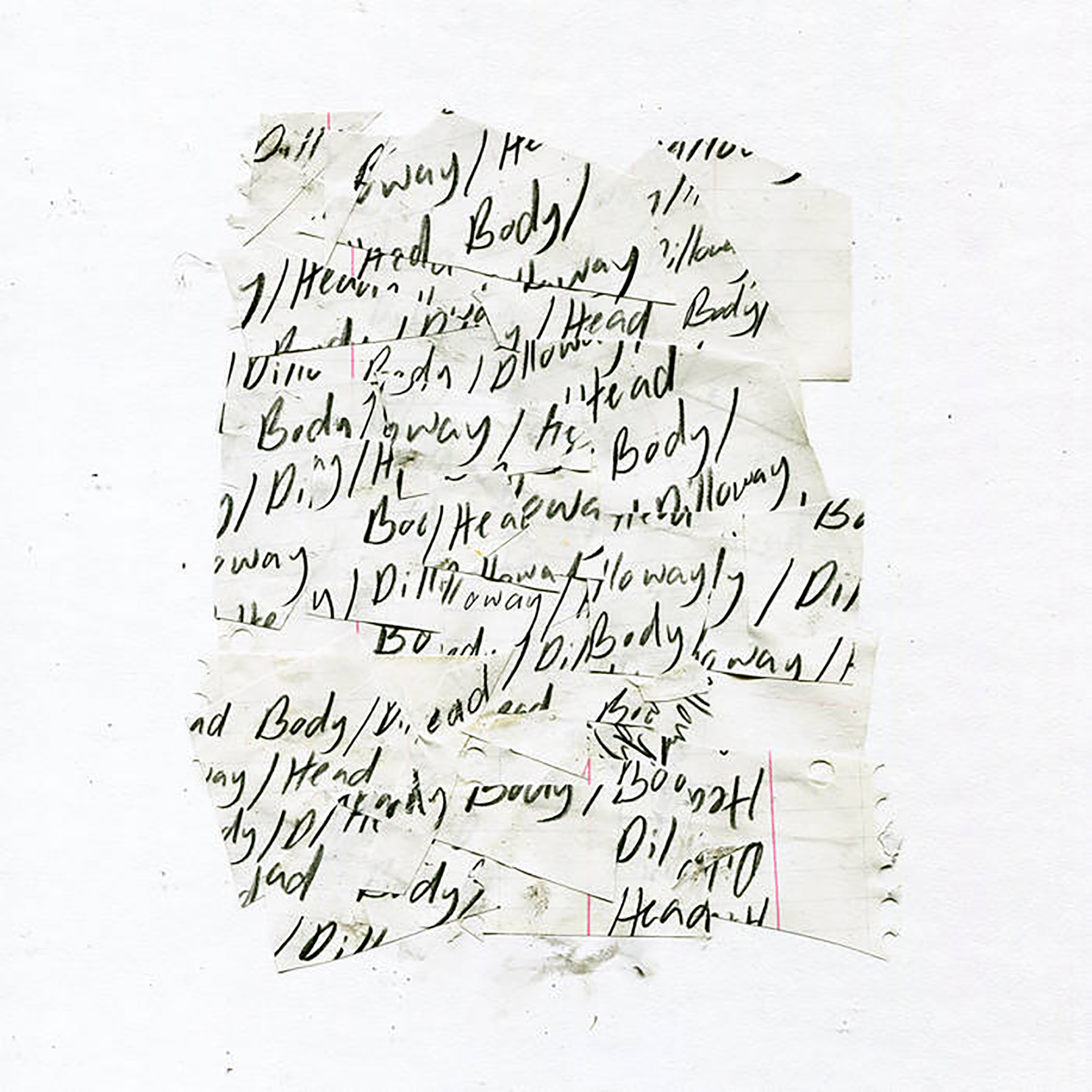 Past experience has taught me not to get too excited about promising-sounding collaborations between great artists, but the allure of this particular project was admittedly damn hard to resist: Body/Head is consistently the most provocative and intense of Sonic Youth's descendants and Aaron Dilloway seems absolutely incapable of releasing a disappointing album these days. Still, there is never any way to predict which threads will assert their dominance when distinctive visions collide, so there are a number of possible shapes that this album could have taken. To my ears, it is Dilloway's broken, murky, and obsessively looping aesthetic that mostly steers the ship, but the balance between the three artists is sufficiently unpredictable and shifting to make this trio feel like something quite different from either Dilloway's solo work or past Body/Head releases. Matt Krefting already did a fine job of summarizing the trio's shared vision with "over and over one gets the sense that the music is trying to wake itself from a dream," but it is also more than that, as this trio have a real knack for slowly transforming gnarled and challenging introductory themes into unexpected passages of sublime beauty.
Past experience has taught me not to get too excited about promising-sounding collaborations between great artists, but the allure of this particular project was admittedly damn hard to resist: Body/Head is consistently the most provocative and intense of Sonic Youth's descendants and Aaron Dilloway seems absolutely incapable of releasing a disappointing album these days. Still, there is never any way to predict which threads will assert their dominance when distinctive visions collide, so there are a number of possible shapes that this album could have taken. To my ears, it is Dilloway's broken, murky, and obsessively looping aesthetic that mostly steers the ship, but the balance between the three artists is sufficiently unpredictable and shifting to make this trio feel like something quite different from either Dilloway's solo work or past Body/Head releases. Matt Krefting already did a fine job of summarizing the trio's shared vision with "over and over one gets the sense that the music is trying to wake itself from a dream," but it is also more than that, as this trio have a real knack for slowly transforming gnarled and challenging introductory themes into unexpected passages of sublime beauty.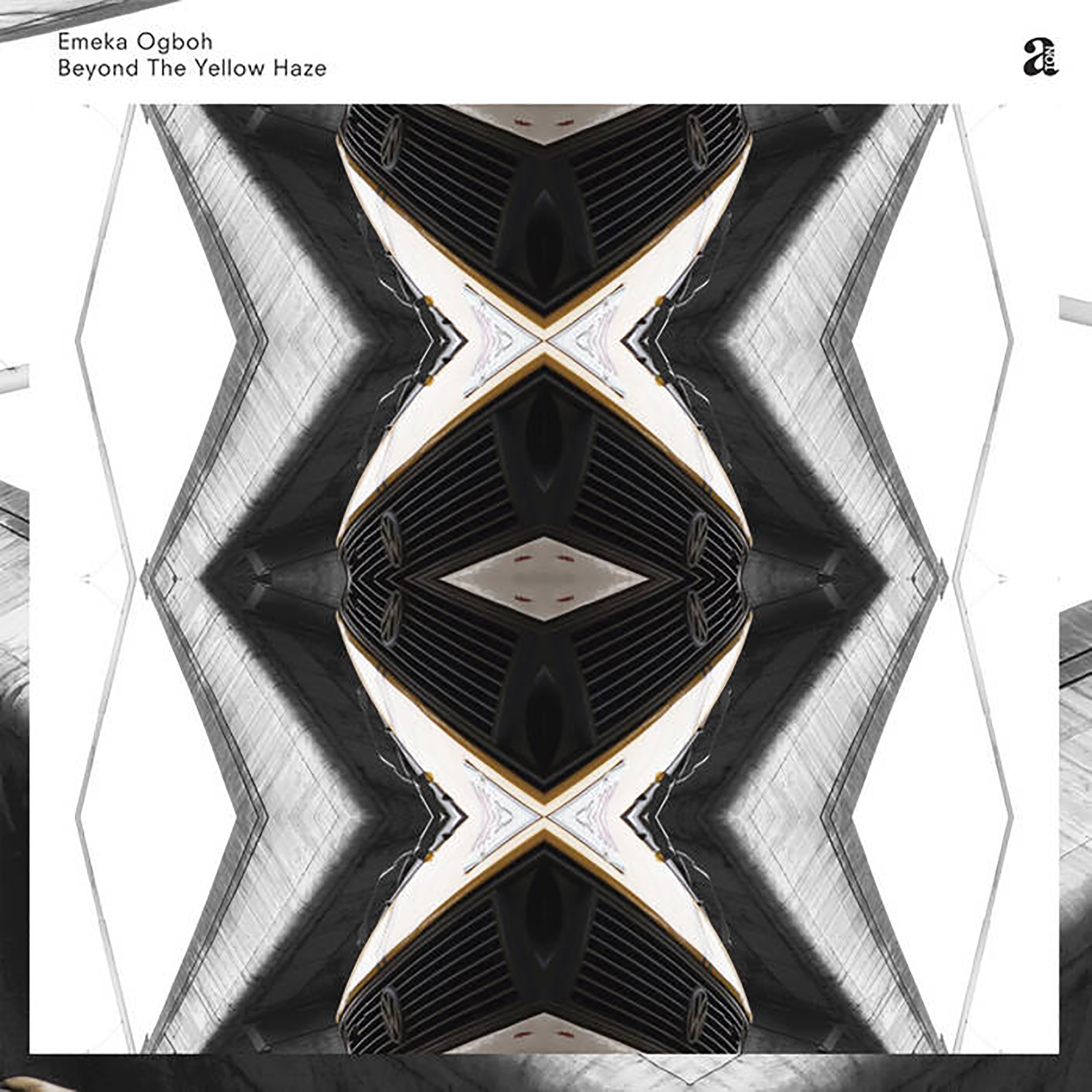 This bombshell release is the first album from Nigerian sound and installation artist Emeka Ogboh, but it sounds like the assured work of killer dub techno producer at the height of their powers. On its surface, Beyond The Yellow Haze admittedly (and probably unintentionally) shares a lot of common ground with prime Muslimgauze, as a central theme of Ogboh's art is his passion for capturing the ambient city sounds of Lagos. Consequently, these five pieces are nicely enhanced with layers of street noise, conversations, and passing snatches of melody, yet Beyond The Yellow Haze is primarily a great album because Ogboh is a goddamn wizard at crafting heavy, shape-shifting grooves with elegant dubwise percussion flourishes. I suppose the beats also creep into Muslimgauze territory at times, as Ogboh is similarly quite fond of slow and hypnotic grooves flavored with African and Arabic rhythms, yet the two artists differ dramatically when it comes to focus and exacting execution (among other things), as nearly every song here is a flawless diamond of immersively layered textures, slow-burning dynamic transformation, and crunching physicality. This is probably the strongest beat-driven album that I have heard all year, debut or otherwise.
This bombshell release is the first album from Nigerian sound and installation artist Emeka Ogboh, but it sounds like the assured work of killer dub techno producer at the height of their powers. On its surface, Beyond The Yellow Haze admittedly (and probably unintentionally) shares a lot of common ground with prime Muslimgauze, as a central theme of Ogboh's art is his passion for capturing the ambient city sounds of Lagos. Consequently, these five pieces are nicely enhanced with layers of street noise, conversations, and passing snatches of melody, yet Beyond The Yellow Haze is primarily a great album because Ogboh is a goddamn wizard at crafting heavy, shape-shifting grooves with elegant dubwise percussion flourishes. I suppose the beats also creep into Muslimgauze territory at times, as Ogboh is similarly quite fond of slow and hypnotic grooves flavored with African and Arabic rhythms, yet the two artists differ dramatically when it comes to focus and exacting execution (among other things), as nearly every song here is a flawless diamond of immersively layered textures, slow-burning dynamic transformation, and crunching physicality. This is probably the strongest beat-driven album that I have heard all year, debut or otherwise.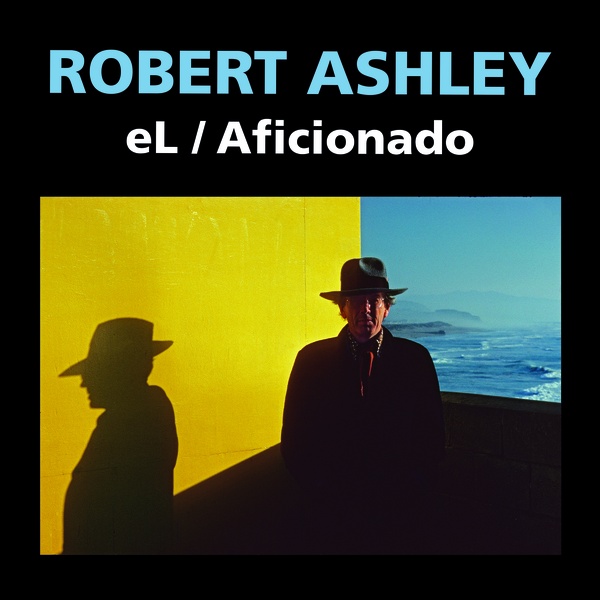 Robert Ashley’s enigmatic opera of interrogation was frequently performed between 1987 and 1993, and a previous recording was released on Lovely Music in 1994. The cast of a 2021 production in Roulette, Brooklyn, are featured on this new rendition, with Kayleigh Butcher, as The Agent, and Brian McCorkle, Bonnie Lander, Paul Pinto as Interrogators #1, 2, and 3. Above and beyond Ashley’s melodies, each participant singer is assigned their own distinct pitch around which they improvise vocal inflections to portray intent and meaning. eL/Aficionado displays the compelling depth of Ashley’s dazzlingly creativity, which is somewhere on a line leading from Edward Hopper and Samuel Beckett to Laurie Anderson and Len Jenkin.
Robert Ashley‚Äôs enigmatic opera of interrogation was frequently performed between 1987 and 1993, and a previous recording was released on Lovely Music in 1994. The cast of a 2021 production in Roulette, Brooklyn, are featured on this new rendition, with Kayleigh Butcher, as The Agent, and Brian McCorkle, Bonnie Lander, Paul Pinto as Interrogators #1, 2, and 3. Above and beyond Ashley‚Äôs melodies, each participant singer is assigned their own distinct pitch around which they improvise vocal inflections to portray intent and meaning. eL/Aficionado displays the compelling depth of Ashley‚Äôs dazzlingly creativity, which is somewhere on a line leading from Edward Hopper and Samuel Beckett to Laurie Anderson and Len Jenkin.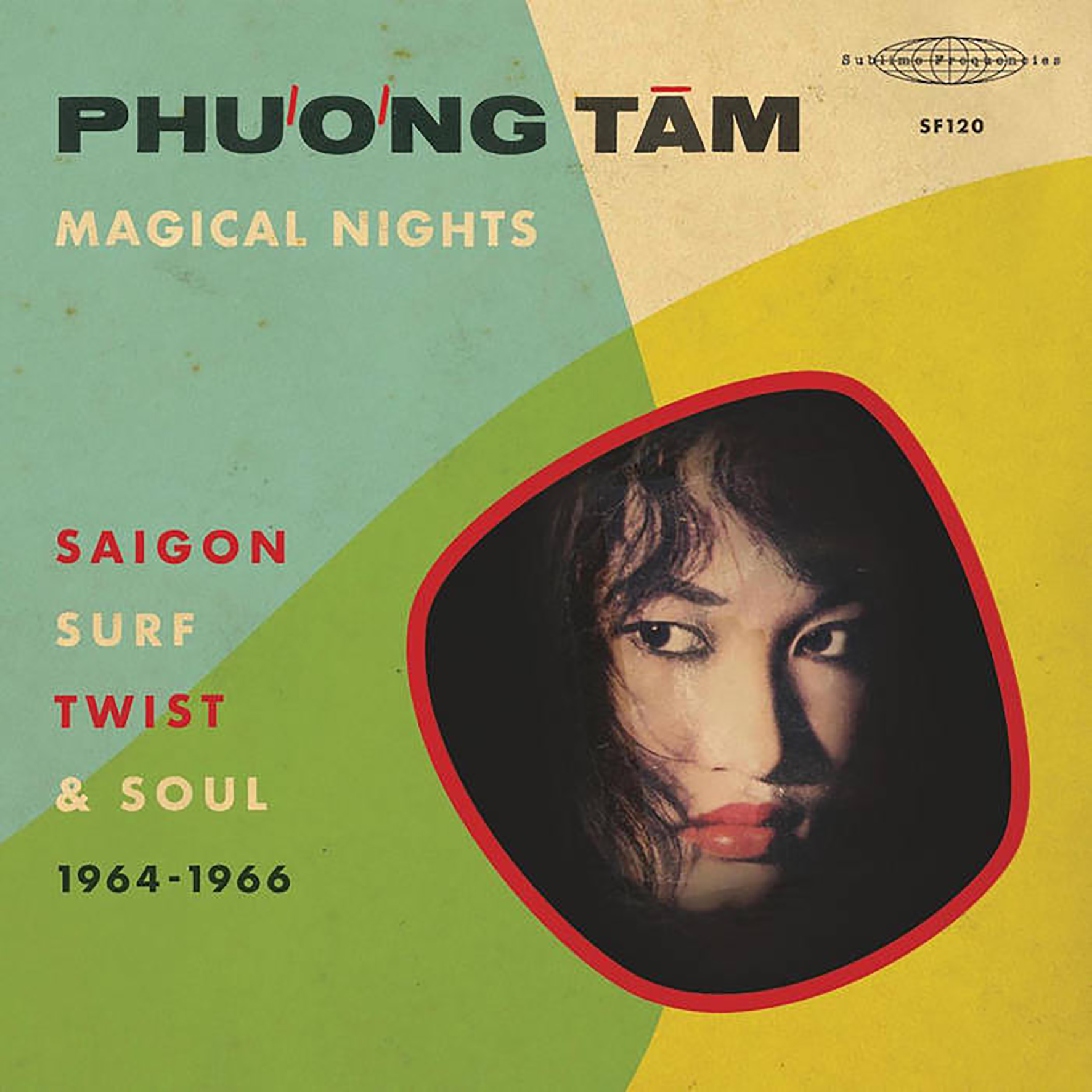 This collection, which I hereby deem an instant Sublime Frequencies classic, is devoted entirely to the long-unheard and elusive discography of one of the most magnetic singers of Saigon's "golden music" age. Part of the reason why Ph∆∞∆°ng T√¢m's work has languished in undeserved semi-obscurity is grimly predictable, as most of her music was destroyed during Vietnam's great purge of American-influenced culture in 1975, but T√¢m also abruptly ended her singing career in her prime to pursue forbidden love instead (an acceptably cool reason, I feel). According to her daughter Hannah H√†, Phương Tâm remained something of a highly localized karaoke supernova in the years since her stardom days, but H√† did not discover how truly famous her mom actually was until late 2019. One thing led to another and H√† found Mark Gergis after discovering his beloved Saigon Rock and Soul compilation. Gergis and a handful of like-minded crate-digging luminaries then set about tracking down as much of Ph∆∞∆°ng T√¢m's rare and often mistakenly attributed oeuvre as they could find, much of which even T√¢m herself had not heard since the recording sessions. While the journey to this album is undeniably a fascinating and heart-warming one, the best part is the songs themselves, as this album is a treasure trove of fun, soulful, and sexy genre-blurring gems from the golden age of swinging Saigon nightlife. Moreover, I was legitimately gobsmacked to learn that these songs were all recorded by the same person in such a brief span, as T√¢m channels everything from Brenda Lee to Ella Fitzgerald to the kind of impossibly cool, sexy, and ahead-of-their-time numbers that feel like would-be highlights from Lux Interior and Poison Ivy‚Äôs oft-anthologized record collection.
This collection, which I hereby deem an instant Sublime Frequencies classic, is devoted entirely to the long-unheard and elusive discography of one of the most magnetic singers of Saigon's "golden music" age. Part of the reason why Ph∆∞∆°ng T√¢m's work has languished in undeserved semi-obscurity is grimly predictable, as most of her music was destroyed during Vietnam's great purge of American-influenced culture in 1975, but T√¢m also abruptly ended her singing career in her prime to pursue forbidden love instead (an acceptably cool reason, I feel). According to her daughter Hannah H√†, Phương Tâm remained something of a highly localized karaoke supernova in the years since her stardom days, but H√† did not discover how truly famous her mom actually was until late 2019. One thing led to another and H√† found Mark Gergis after discovering his beloved Saigon Rock and Soul compilation. Gergis and a handful of like-minded crate-digging luminaries then set about tracking down as much of Ph∆∞∆°ng T√¢m's rare and often mistakenly attributed oeuvre as they could find, much of which even T√¢m herself had not heard since the recording sessions. While the journey to this album is undeniably a fascinating and heart-warming one, the best part is the songs themselves, as this album is a treasure trove of fun, soulful, and sexy genre-blurring gems from the golden age of swinging Saigon nightlife. Moreover, I was legitimately gobsmacked to learn that these songs were all recorded by the same person in such a brief span, as T√¢m channels everything from Brenda Lee to Ella Fitzgerald to the kind of impossibly cool, sexy, and ahead-of-their-time numbers that feel like would-be highlights from Lux Interior and Poison Ivy‚Äôs oft-anthologized record collection. This unique debut album is definitely one of the year's most pleasant surprises, as art/music journalist Kretowicz assembled a bevy of talented collaborators to craft a poignant and subtly hallucinatory tour de force of autofiction-based sound art. While some of the people involved (Mica Levi, Tirzah, etc.) certainly enhance the initial allure of I hate it here, it is a great challenge to focus on anything other than Kretowicz's sardonic, time-bending narrative as soon as she opens her mouth and things gets rolling. Thematically, the album is billed as a "psychedelic audio narrative" that "wanders through a layered and multi-dimensional notion of existence as suffering," which mostly feels apt, yet it fails to convey how truly charming and blackly funny wandering through that notion with Kretowicz can be. More importantly, this is the rare spoken word album that remains compelling beyond the first listen, as the combination of Kretowicz's deadpan, accented voice and the sound collage talents of felicita & Ben Babbitt make it an absorbing delight long after the meaning and impact of Kretowicz's words dissipate into more abstract and nuanced pleasures like texture and feeling. To my ears, this is one of the most inspired, immersive, and memorable albums of the year.
This unique debut album is definitely one of the year's most pleasant surprises, as art/music journalist Kretowicz assembled a bevy of talented collaborators to craft a poignant and subtly hallucinatory tour de force of autofiction-based sound art. While some of the people involved (Mica Levi, Tirzah, etc.) certainly enhance the initial allure of I hate it here, it is a great challenge to focus on anything other than Kretowicz's sardonic, time-bending narrative as soon as she opens her mouth and things gets rolling. Thematically, the album is billed as a "psychedelic audio narrative" that "wanders through a layered and multi-dimensional notion of existence as suffering," which mostly feels apt, yet it fails to convey how truly charming and blackly funny wandering through that notion with Kretowicz can be. More importantly, this is the rare spoken word album that remains compelling beyond the first listen, as the combination of Kretowicz's deadpan, accented voice and the sound collage talents of felicita & Ben Babbitt make it an absorbing delight long after the meaning and impact of Kretowicz's words dissipate into more abstract and nuanced pleasures like texture and feeling. To my ears, this is one of the most inspired, immersive, and memorable albums of the year. This is one of those rare collaborations in which I had absolutely no idea what kind of album to expect, as the only obvious common ground this duo shares is a strong interest in sound design, though it is probably safe to say they are both drawn to unusual projects too given their past involvement with Rắn Cạp ĐuôI Collective. Now that I have heard Myxomy, however, I am faced with the fresh challenge of describing a vision that is elusively shapeshifting, kaleidoscopic, and wrong-footing from start to finish. I suppose the most consistent aesthetic is something akin to "half-deconstructed/half-maximalist outsider R&B" or some similarly heretofore nonexistent genre, but the real theme seems to exclusively be one of endless mutation. In fact, the idea for the collaboration originally began with James Ginzburg sending Ziúr some beats from his early techno days, which triggered a dueling exchange of raw material reworkings that rapidly escalated and morphed until the "duo's fragmented sketches and scribbles took on new life" that "developed into anxious, hybridized pop jewels." To be fair, Myxomy is admittedly poppier than I ever would have anticipated, but this project is waaaaay too weird, fractured, and unpredictable to ever be mistaken for actual pop (jewels or otherwise). It mostly feels more like a handful of hooks wandering through a collapsed post-industrial landscape in search of a proper home. I am not sure any of them ever quite found one (seems doubtful), but some of these experiments are impressively visceral and unique in their own right (even if they can sometimes be a real challenge to digest).
This is one of those rare collaborations in which I had absolutely no idea what kind of album to expect, as the only obvious common ground this duo shares is a strong interest in sound design, though it is probably safe to say they are both drawn to unusual projects too given their past involvement with Rắn Cạp ĐuôI Collective. Now that I have heard Myxomy, however, I am faced with the fresh challenge of describing a vision that is elusively shapeshifting, kaleidoscopic, and wrong-footing from start to finish. I suppose the most consistent aesthetic is something akin to "half-deconstructed/half-maximalist outsider R&B" or some similarly heretofore nonexistent genre, but the real theme seems to exclusively be one of endless mutation. In fact, the idea for the collaboration originally began with James Ginzburg sending Ziúr some beats from his early techno days, which triggered a dueling exchange of raw material reworkings that rapidly escalated and morphed until the "duo's fragmented sketches and scribbles took on new life" that "developed into anxious, hybridized pop jewels." To be fair, Myxomy is admittedly poppier than I ever would have anticipated, but this project is waaaaay too weird, fractured, and unpredictable to ever be mistaken for actual pop (jewels or otherwise). It mostly feels more like a handful of hooks wandering through a collapsed post-industrial landscape in search of a proper home. I am not sure any of them ever quite found one (seems doubtful), but some of these experiments are impressively visceral and unique in their own right (even if they can sometimes be a real challenge to digest). Montreal's Yoo Doo Right, aptly named after a very early Can track, are absolutely about that vibe; one doesn't need to be a keen listener to catch that early on. However, the band's debut album is not a duplicate of any single kosmische entity but rather a blend of each best. They have been doing their homework, revealing a deep respect for the genre. Their debut "Don't Think You Can Escape Your Purpose" provides some of the best modern space rock released this year, filled with motorik rhythms and atmospheric guitars backed by solid bass lines. The music feels free enough to go off on tangents but always comes back around, fluidly alternating from dreamy fuzz to delicate ambiance before rocking out motorik-style.
Montreal's Yoo Doo Right, aptly named after a very early Can track, are absolutely about that vibe; one doesn't need to be a keen listener to catch that early on. However, the band's debut album is not a duplicate of any single kosmische entity but rather a blend of each best. They have been doing their homework, revealing a deep respect for the genre. Their debut "Don't Think You Can Escape Your Purpose" provides some of the best modern space rock released this year, filled with motorik rhythms and atmospheric guitars backed by solid bass lines. The music feels free enough to go off on tangents but always comes back around, fluidly alternating from dreamy fuzz to delicate ambiance before rocking out motorik-style.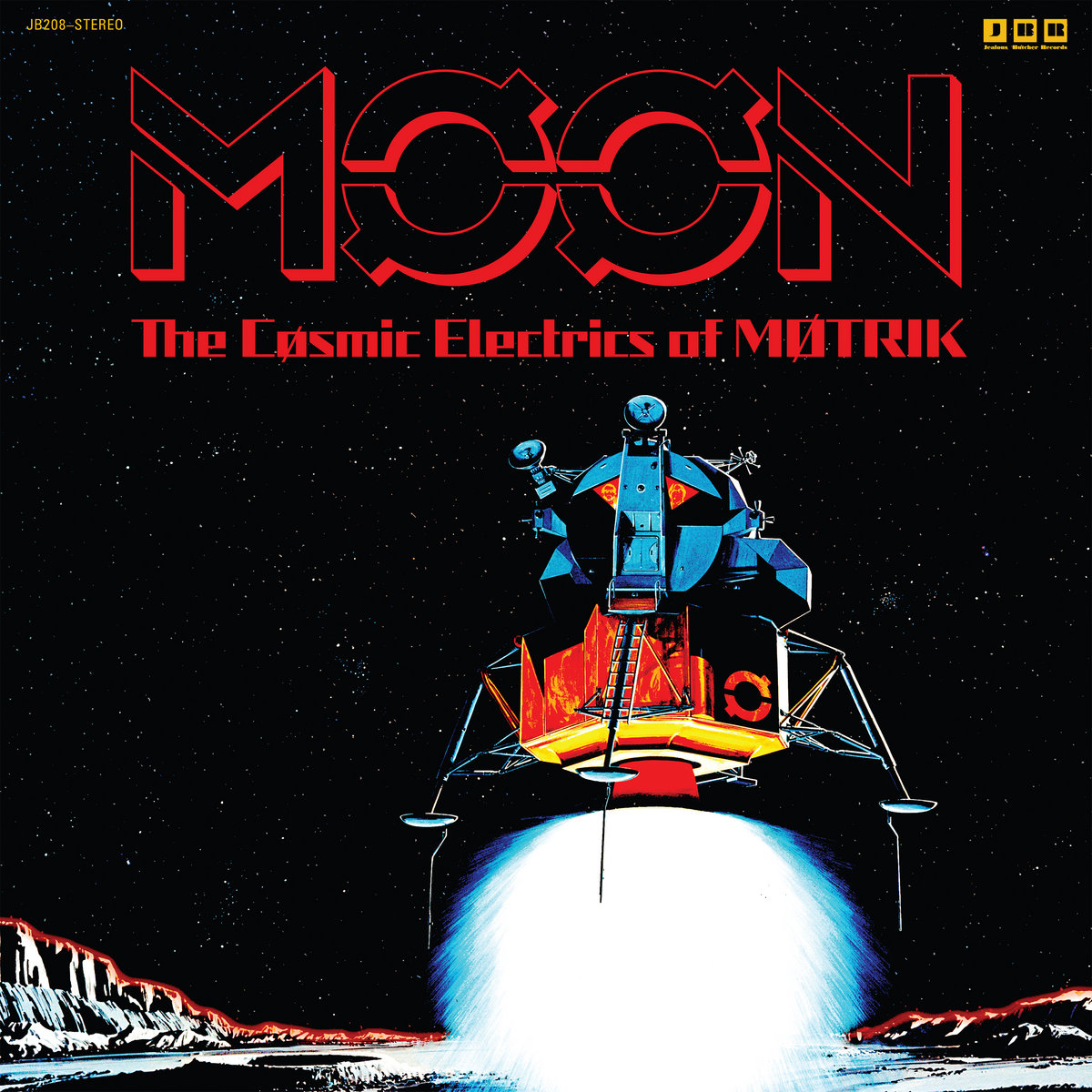 The latest from Portland, Oregon's appropriately named M√∏trik consumed me in seconds, dragging my earholes down into a kosmische pool before spitting me into outer space. Thankfully, it was a pleasantly symbiotic relationship for me, a journey I enjoyed taking into M√ò√òN: The Cosmic Electrics of M√òTRIK. While M√∏trik may not yet stand alongside their elders in the history books, each of its practiced members form a tight rhythm section of bass and drums, knowing exactly when to lay on the space by way of thick layers of distortion and when to visit more ethereal territory.
The latest from Portland, Oregon's appropriately named M√∏trik consumed me in seconds, dragging my earholes down into a kosmische pool before spitting me into outer space. Thankfully, it was a pleasantly symbiotic relationship for me, a journey I enjoyed taking into M√ò√òN: The Cosmic Electrics of M√òTRIK. While M√∏trik may not yet stand alongside their elders in the history books, each of its practiced members form a tight rhythm section of bass and drums, knowing exactly when to lay on the space by way of thick layers of distortion and when to visit more ethereal territory.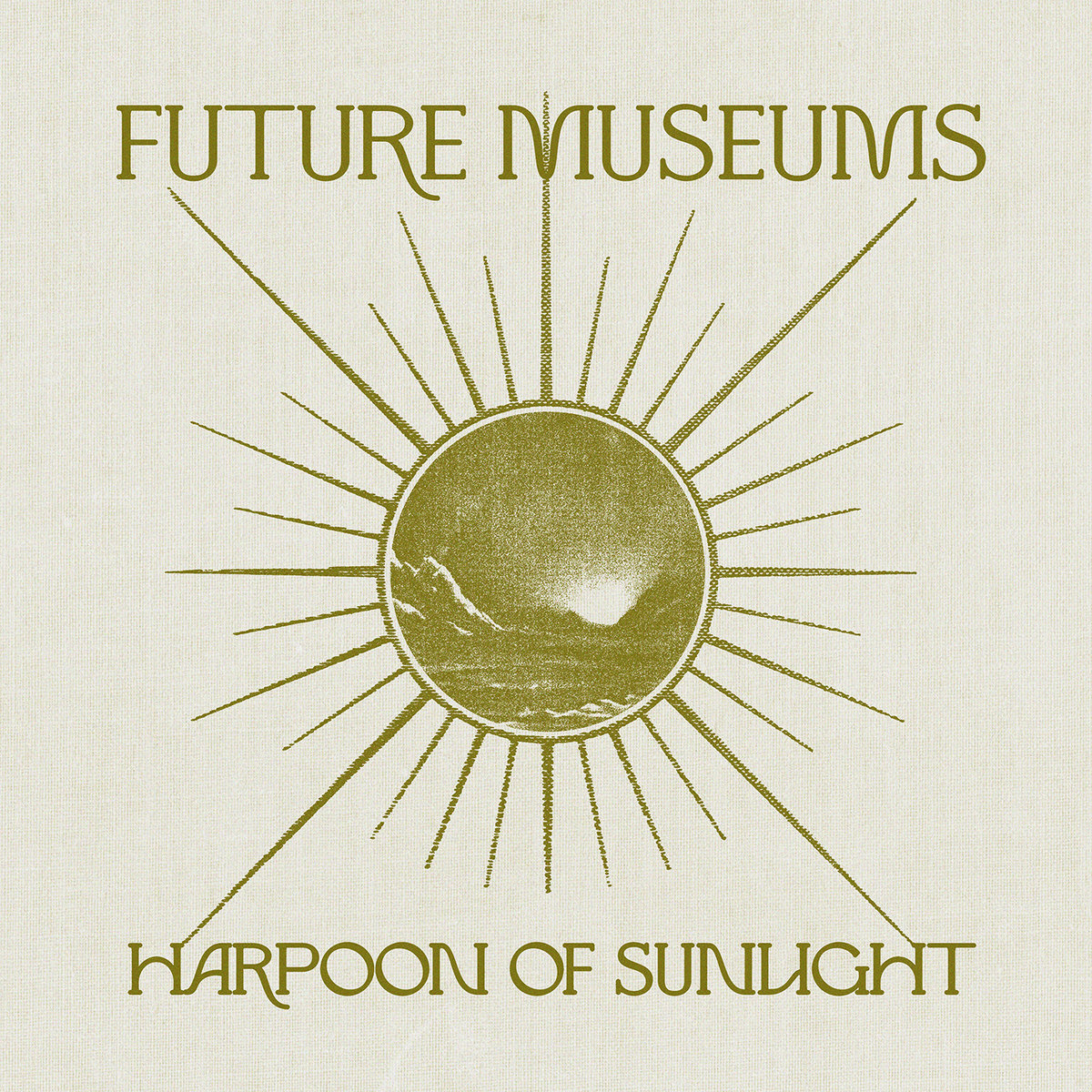 "Harpoon of Sunlight" sees Neil Lord's project Future Museums releasing on Austin label Aural Canyon, a label whose tagline reads "Deep listening for the new, now age." While Lord also releases on Holodeck, the switch is appropriate for his latest, a work initially conceived as "an hour and a half long album exercising patience and repetition," of which the most melodic portions were pressed to the first vinyl release for both the artist and label. Recorded in quarantine in 2020, the resulting album reflects the intense Texas summer heat, alternating between warming and traumatic, interrupted only by cooler evening breezes that serve as a reprieve. Inventive percussive sounds are delicately strewn through atmospheric synths and motorik rhythms, providing a balance between hard and soft, and hot to cool, serving as an aural respite for the challenges of the past couple of years.
"Harpoon of Sunlight" sees Neil Lord's project Future Museums releasing on Austin label Aural Canyon, a label whose tagline reads "Deep listening for the new, now age." While Lord also releases on Holodeck, the switch is appropriate for his latest, a work initially conceived as "an hour and a half long album exercising patience and repetition," of which the most melodic portions were pressed to the first vinyl release for both the artist and label. Recorded in quarantine in 2020, the resulting album reflects the intense Texas summer heat, alternating between warming and traumatic, interrupted only by cooler evening breezes that serve as a reprieve. Inventive percussive sounds are delicately strewn through atmospheric synths and motorik rhythms, providing a balance between hard and soft, and hot to cool, serving as an aural respite for the challenges of the past couple of years.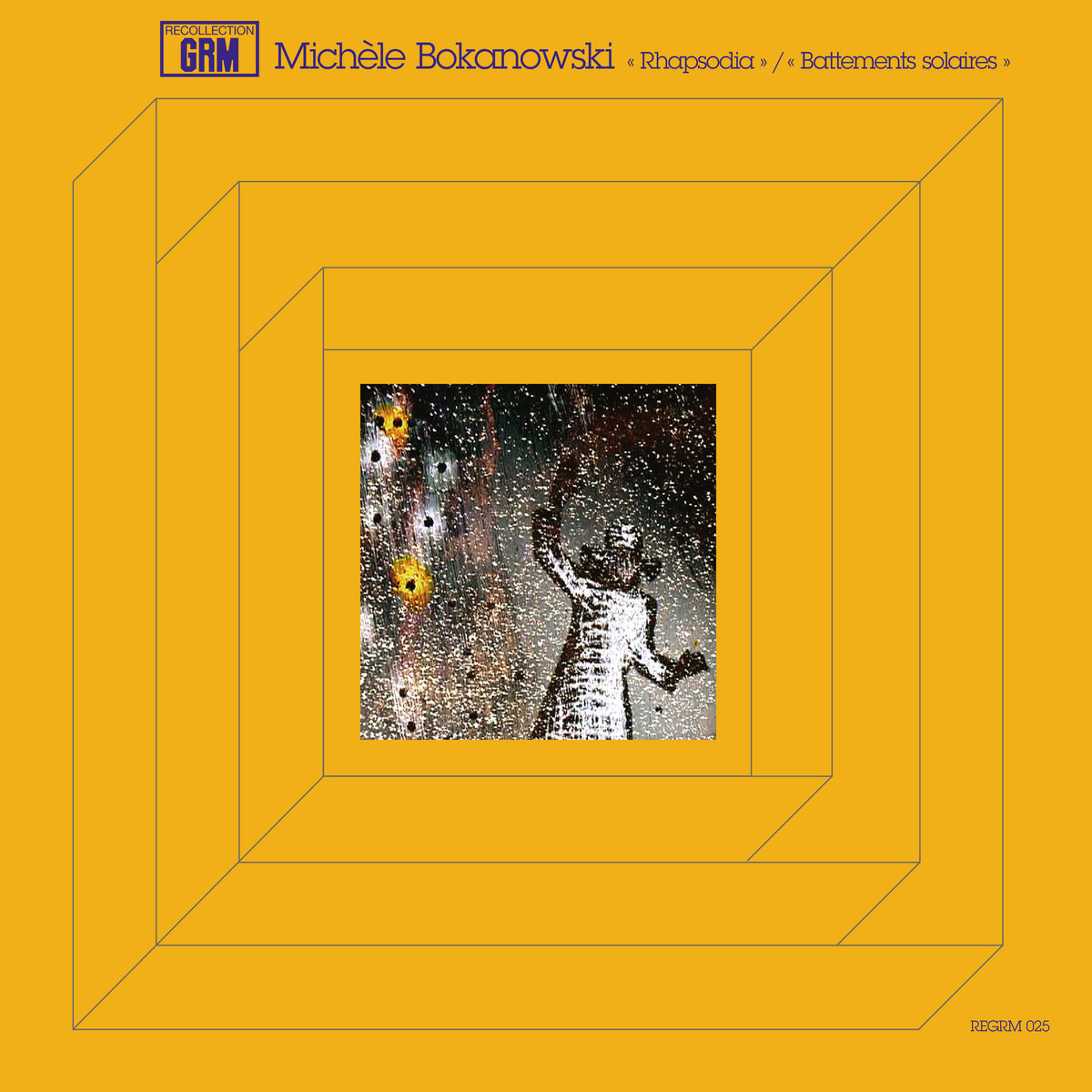 This electro-acoustic release by Michèle Bokanowki consists of two pieces. "Rhapsodia" from 2018, is a stunning work in two movements with a short interlude, dedicated to choreographer, Marceline Lartigue. "Rhapsodia" is as close to perfection as I can imagine music to ever be, with the texture, the pace, the changes, and the timing of the changes all working in an organic and unhurried way. "Battlement solaires" from a decade earlier, is the soundtrack to Patrick Bokanowski’s film of that name. Initially I felt this second piece might be best heard with visual images, but by the third hearing I utterly love it as a stand alone work, too.
This electro-acoustic release by Michèle Bokanowki consists of two pieces. "Rhapsodia" from 2018, is a stunning work in two movements with a short interlude, dedicated to choreographer, Marceline Lartigue. "Rhapsodia" is as close to perfection as I can imagine music to ever be, with the texture, the pace, the changes, and the timing of the changes all working in an organic and unhurried way. "Battlement solaires" from a decade earlier, is the soundtrack to Patrick Bokanowski’s film of that name. Initially I felt this second piece might be best heard with visual images, but by the third hearing I utterly love it as a stand alone work, too.